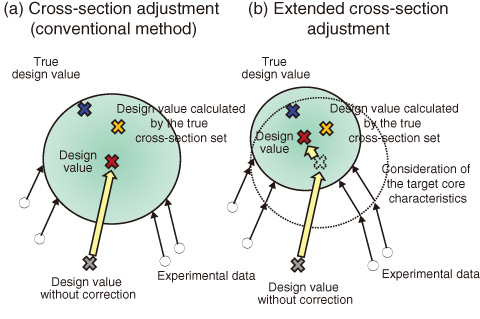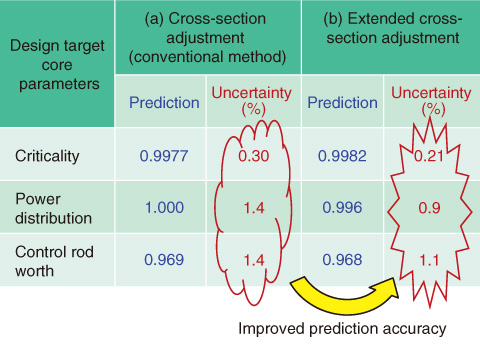
Fig. 8-4 Features of the new adjustment method
Table 8-1 Comparison of prediction accuracy

To design a new-type of reactor, it is necessary to accurately predict the nuclear characteristics of the reactor core parameters, which are determined by the reactions between neutrons and nuclei. These core parameters can be predicted by nuclear data and computer codes. The former describe the features of the nuclear reactions, whereas the latter analyze the behavior of neutrons. The accuracy of the predicted value can be validated with a full-scale, well-simulated experiment, a so-called mock-up experiment. However, such an experiment would be very difficult because it incurs huge costs and requires full-scale nuclear fuels.
To solve these problems, a design method called cross section (set) adjustment has been used in fast reactor core design study. The cross section set consists of nuclear data converted to be applicable to the computer codes. The cross section adjustment method based on the Bayes theorem enables us to improve the prediction accuracy of the core parameters by adjusting the cross section set to existing experimental data. In this method, the target core parameters calculated by the adjusted cross section set are used directly as the design values. This method, therefore, has the advantage that all the design values are physically consistent with each other.
On the other hand, another design method called the extended bias factor method was developed in a previous study by the Japan Atomic Energy Agency. This method has the advantage that it can give the most accurate design values. However, the extended bias factor method does not attempt to maintain consistency among the design values.
In the present study, a new design method called extended cross section adjustment is developed. The new method theoretically integrates the two existing design methods mentioned above. The conventional adjustment method alters the cross section set in order to maximize its correctness by optimizing it to the existing experimental data. In contrast, the present method adjusts the cross section set to minimize the uncertainty of the design value by taking into account the target core characteristics. Therefore, it is possible to improve the prediction accuracy further (Fig.8-4). By applying the new method to a typical large fast reactor design analysis, it is demonstrated that the prediction accuracy is improved more efficiently than in the conventional method (Table 8-1).
The new method not only clarifies the theoretical relation between the conventional cross section adjustment method and the extended bias factor method, but also successfully improves the prediction accuracy. In the future, the new method will be used for a reactor design study as a design method that efficiently improves the prediction accuracy.
<Previous: 8 Nuclear Science and Engineering Research | Next: 8-2 >